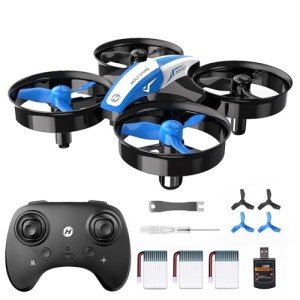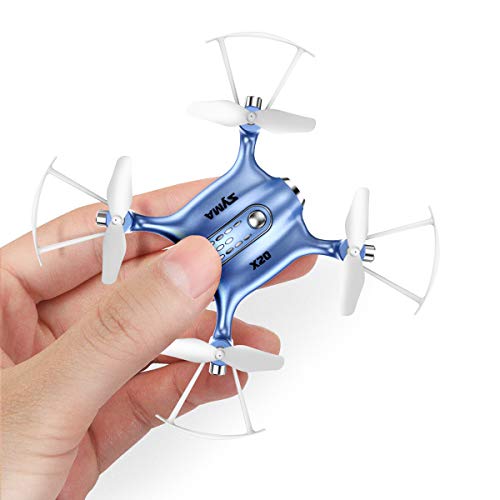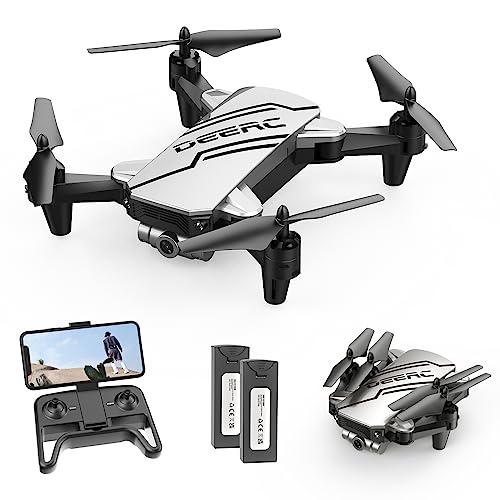When your kids take to the skies with their drones, safety should always come first. Kids Drone Safety isn’t just a guideline; it's a must! Make sure your little pilots understand the importance of flying responsibly. Here are some key tips to keep in mind.
First, pick an open area for flying. Parks or fields are perfect spots where they won’t run into trees, buildings, or other people. Avoid busy streets or crowded places. This way, they can enjoy their flying time without worrying about potential hazards.
Next, teach your kids the rules for flying. Drones should stay away from airports, and it’s smart to avoid flying near animals. A little training goes a long way! Spend some time practicing basic controls with them. Knowing how to land safely and steer clear of obstacles can prevent accidents and help build their confidence.
Always supervise your kids while they fly. Even if they’re seasoned drone pilots, accidents can happen in a flash. Being there to guide them not only ensures safety but is also a great chance for bonding. Plus, it’s a fun way to share in their hobby!
Lastly, don’t forget to remind them to keep their drones in sight at all times. It's easy to get caught up in the fun and lose track of where the drone is. Keeping an eye on it helps avoid unnecessary crashes and keeps everyone safe. Encourage them to have fun but also to take safety seriously - it’s all part of the joy of flying!
Choose the Right Drone for Your Child
Picking the right drone for your child can feel a bit overwhelming with all the options out there. First off, think about their age and experience level. For younger kids or kids who are new to flying, a lightweight, smaller drone is a smart choice. These drones are usually durable and can handle the occasional bump or crash.
Next, consider features that enhance safety. Look for drones with protective guards around the props. This helps prevent injuries and keeps the drone safe when kids are still learning how to navigate. Another handy feature is altitude hold—this allows the drone to stay at a set height, making it easier for beginners to control.
Battery life is also a big deal. Kids might lose interest if they have to wait too long for their drone to recharge. Try to find a drone with longer flight times or have extra batteries on hand so they can keep flying. And don't forget about range! A drone that flies too far might lead to a frustrating search if it goes out of sight.
Finally, always check the drone’s weight and size. A drone that’s too heavy or big can be a hassle. Lightweight drones can be super easy to handle and are typically safe to fly indoors and outdoors, making them perfect for playdates. And remember, ensuring Kids Drone Safety means not just picking the right device, but also setting up some flying rules before they take to the skies!
Potensic ATOM 4K GPS Drone Fly More Combo
Experience stunning aerial photography and effortless flying with the Potensic ATOM 4K GPS Drone Fly More Combo
Product information
$449.99 $379.99
Product Review Score
4.96 out of 5 stars
54 reviewsProduct links
Teach Safe Flying Practices Together
Flying a drone can be super fun for kids, but keeping safety in mind is key! Parents should dive into the world of kids drone safety together with their little ones. This not only makes it a great bonding experience but also sets the stage for responsible flying habits.
Start by discussing the importance of flying in open spaces away from people and animals. Busy parks might seem appealing, but they can pose risks. Help your kids pick areas like empty fields or backyards. This way, they can focus on mastering their skills without worrying about others getting in the way.
Another essential topic is understanding the drone's controls. Make it a game! Spend time practicing how to take off and land smoothly. Kids should know what each button does and how to respond if something goes wrong. Practicing together builds their confidence while showing them the value of staying calm under pressure.
Lastly, set clear rules about where and when they can fly. Having a schedule can make the flying experience even more exciting. Maybe you designate weekends for drone flying adventures. Kids drone safety is all about creating a routine that keeps flying fun and, most importantly, safe!
3.7V 850mAh Battery for Eachine E58 Drone - 2 Pack
Keep your Eachine E58 in the air longer with this reliable 2 pack of 3.7V 850mAh batteries
Product information
$22.98
Product Review Score
4.35 out of 5 stars
89 reviewsProduct links
Supervise and Set Clear Boundaries
When it comes to Kids Drone Safety, supervision is key. You can’t just hand your child a drone and expect them to figure it all out on their own. Kids may get a bit too excited and forget about the rules, or they might not even see potential dangers. Always keep an eye on them while they’re flying. This not only keeps them safe, but also gives you a chance to teach them what to do and what not to do while maneuvering their drone.
Setting clear boundaries is another important part of Kids Drone Safety. Make sure your child knows where they can and can’t fly their drone. This might include avoiding crowded areas, keeping away from roads, and staying low around trees and buildings. Let them know it’s not just about their safety, but also about others around them. You can set up specific “flying zones” to help them understand these limits. This way, they stay in safe areas and enjoy their flying experience.
It’s also helpful to create some rules for how long and when they can fly their drone. Maybe limit flights to weekends or after school, and set a time limit for each session. This not only helps manage screen time but also prevents accidents from happening when they might be tired or distracted. Having these boundaries will teach them responsibility and respect for their equipment, which is a big part of Kids Drone Safety.
Lastly, encourage open communication. Make sure your child feels comfortable talking to you if they have questions or if something goes wrong. If they crash the drone or misjudge a flying zone, they should know they can come to you without fear. This creates a positive learning environment and can prevent future mishaps. Remember, being involved helps them become safer and more confident drone pilots!




